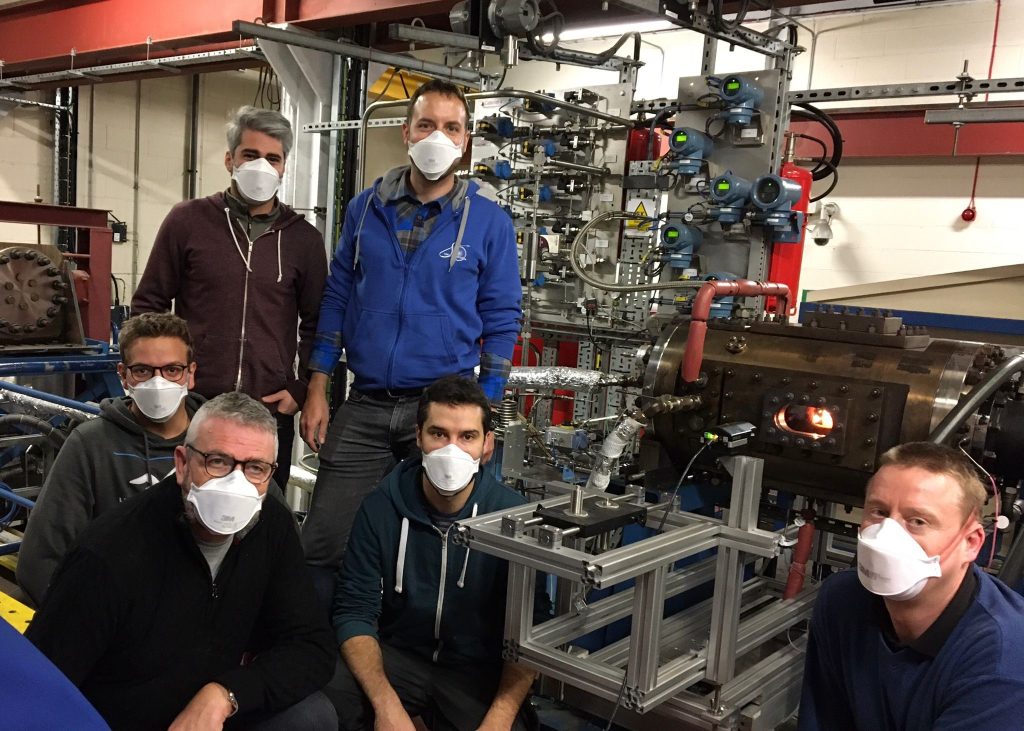Navigation menu
- Education
- Emissions & Air Quality
- Infrastructure & Services
- Meteorology & Climate
- News
- Physical Chemistry
- Projects
- The Team
Exactly one year after the first measurements at the Gas Turbine Research Centre (GTRC) in Wales, the second measurement campaign was due there. And just like last year, the situation with the COVID pandemic started to deteriorate dramatically just before our departure. After numerous meetings, discussions and clarifications, including the development of strict COVID protection measures, we all decided to carry out the test campaign anyway.
Thus, the METENVIA team landed in an almost empty plane in London on the morning of November 30th. After a first COVID test already at the airport, we got into our rental car and drove to the GTRC in Port Talbot, where we immediately started setting up SMARTEMIS for the campaign.
While the PM measurement instruments of both reference systems (SMARTEMIS and the EU-system) were maintained and calibrated immediately before the first RAPTOR campaign, the second measurement campaign primarily focused on evaluating instrument drift after a year with many engine tests done in-between without calibration. In addition to the RAPTOR objectives, we performed experiments for the first specific contract of the EASA-funded SAMPLE IV consortium.

Over the course of the next one and a half weeks, in addition to the daily COVID tests, our days were filled with lots of experimental work aimed at improving the standardized nvPM sampling and measurement methodology. Before the intercomparison of the complete nvPM systems, we looked closely at individual instruments. We ran nvPM mass and size distribution measurement instruments in parallel using various aerosol generators and diluted exhaust from the RQL combustor burning jet fuel blends. At the end of the campaign, we collected filter samples from the RQL combustor rig to evaluate the uncertainty in the filter collection methodology for the calibration of nvPM mass instruments. Quartz fiber filters collected using different setups will be analyzed using thermal- optical analysis. Despite some technical issues (three broken gas analyzers), all experiments could be carried out successfully.
All in all, the campaign was very successful, especially because we returned to Switzerland COVID-free.